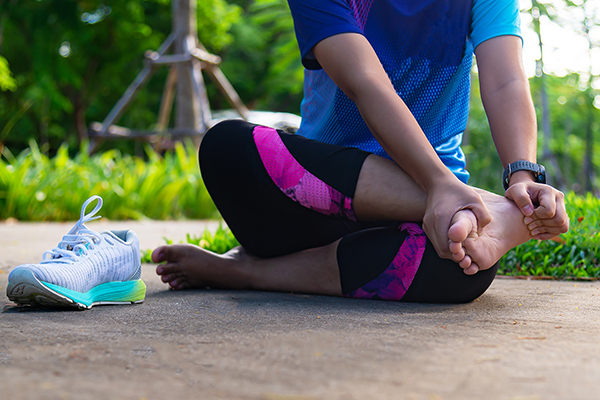Is It OK to Work Out With an Injury?

Sticking to your workout schedule brings plenty of rewards — like sculpted muscles, better cardiorespiratory endurance and health, and reduced anxiety and depression.
But when you’re sidelined with an injury, you may wonder how quickly you can get back to your workout routine.
First things first: The answer depends on several factors, including the type of injury you’re dealing with and the intensity of your usual workouts.
So when you’re nursing an injury, it’s important to check with a doctor or physical therapist before resuming your workouts.
They can help you determine what exercises you should and shouldn’t do right now, and how to prevent further injury.
If you’re wondering if it’s okay to work out with an injury, here’s information that may be helpful for you to know.

When Can I Start Working Out After An Injury?
That depends on the injury itself, and how your post-injury recovery is going. “I would encourage individuals to seek guidance from a physical therapist who can evaluate and guide them through this process,” says Phillip Higgins, DPT, a board-certified clinical specialist in sports rehabilitation and clinical director of Bespoke Treatments in Seattle, WA.
But just because you’re rehabilitating an injury, that doesn’t necessarily mean you need to be completely sedentary, Higgins adds. In fact, exercise — and movement in general — is often a key component of injury recovery.
If you’re able to exercise with your injury, the key is to choose exercises that won’t aggravate it.
For example, if you’re dealing with a knee injury, you’ll want to avoid high-impact exercises that put extra stress on your knees, like jumping or deep squats.
Instead, opt for low-impact movements like pool workouts, mat Pilates, or sessions on the elliptical — but listen to your body and your physician, and let your symptoms dictate what’s doable.
“If you do experience pain, you will either need to modify the duration or intensity of the activity, or do something different,” says Rebecca Van Heuklon, DPT, a physical therapist at MotionWorks Physical Therapy in Neenah, WI. “It’s important to slowly work back into exercise to avoid re-injury.”

What Exercise Causes the Most Injuries?
Certain types of exercises — like running, squats, lunges, and deadlifts — may lead to injury.
“But in actuality, the culprit isn’t [the] exercise itself,” says Carol Mack, DPT, a certified strength and conditioning specialist and board-certified specialist in sports physical therapy.
In other words: Your likelihood of injury is less about which specific exercises you do, and more about how you do them.
Overexertion is one common culprit. This could mean running too many miles, lifting too much weight, or exercising too often — especially if you’re using poor form.
Injuries can also happen when you attempt a move that’s well above your ability level, like trying a tricky plyo move you saw on Instagram without building a base level of fitness or strength first.
“It’s like trying to do calculus without knowing how to add or subtract,” Higgins says.
How to Prevent Injury During Exercise
Want to help reduce your chances of an injury? These tips can help:
- If you’re just starting your fitness journey, try low-impact exercises like walking, swimming, or biking.
- Always use proper form, even if it means you have to go slower or modify the movement.
- Vary your workouts day to day to avoid overuse. (One easy option: Follow an exercise program with built-in variety.)
- Push yourself gradually.

How Can I Exercise With An Injured Foot or Ankle?
Any injury can be frustrating to deal with, but foot and ankle injuries, in particular, can be a real drag. After all, if it hurts just to put weight on your foot, how can you expect to exercise?
While many activities will likely be off-limits while you recover — especially dynamic exercises like plyometrics and running — you may have other options for working up a sweat. “If not painful, biking and swimming may be good alternatives, but this depends on the injury,” Mack says.
If those exercises still bother your foot, shift to upper body and core exercises instead — especially those you can perform while sitting or lying down, Van Heuklon adds.
But no matter what type of injury you have, always consult a medical professional before resuming your workouts. A doctor or physical therapist can guide you along a safe path to recovery, so you can get back to your old routine as soon as possible.
The content of this article is meant for informational purposes only and is not intended to be a substitute for professional medical advice, diagnosis, or treatment. Always seek the advice of your physician or other qualified health provider with any questions you may have regarding your specific condition.
